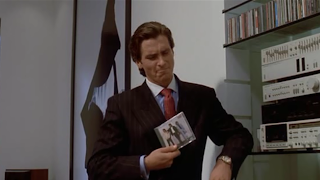Evaluation
Evaluation Plan
For the final 20 marks of the project, you must complete seven tasks on your blog, posting them in this order, with the question heading at the top of each task. You may do them as a pair/group, but must post individual copies on each blog. Make sure you answer each question as well as producing the visual elements.
1. In what ways does your media product use, develop or challenge forms and conventions of real media products? (I.e. of film openings)
1. In what ways does your media product use, develop or challenge forms and conventions of real media products? (I.e. of film openings)
Well in our film for our media course we did a lot of things that would conform to the conventions of a horror film. For example we used a lot of props for the killing of the victim and a lot of fake blood which I was covered in a lot of the filming time – when people go to see a horror film, they generally expect high quality special effects of a gory nature, and we attempted to provide that in the opening. We tried to make the killer like a Hannibal Lecter were his takes time and plans out what his is going to do for his murders and finds it to be more of a sport or a hobby than an abnormal thing.
2. How does your media product represent particular social groups?
2. How does your media product represent particular social groups?
Are media product represents particular social groups by using the killer to be a upper/middle class guy, like the one out of American Psycho where some of are inspiration came from. So we thought that we could go with that idea as well but not let the audience see the killers face.
3. What kind of media institution might distribute your media product and why?
3. What kind of media institution might distribute your media product and why?
Whilst choosing a distribution/production company for our film, we looked at various companies that had dealt similar films in our genre. So we choose on Lions Gate because Saw, Hostel and American Psycho where all in the same genre that we was doing for our film. Also American Psycho was one of the main films we have had based our film on, and to find out that Lions Gate did them and was an independent film company fitted straight in for us.
4. Who would be the audience for your media product?
4. Who would be the audience for your media product?
Our audience for our media film course work is 16+. We have chosen this because there is quite a lot of blood and some gory scene and we don’t think it will be suitable for an age under 16 but saying that we do have a lot of attraction for the young adults and the older adults. It would generally be targeted at an audience that is interested in horror or gory films in anyway.
5. How did you attract/address your audience?
Well I think we attracted are audience by putting blood and thing that would be seen as a good horror film. Thing that would make it attract the audience are horror film is its British, has blood and gory scene; has the whole classy mood to it; the use of close up shot; the shots in the view of the victim and the camera being all dazed.
6. What have you learnt about technologies from the process of constructing this product?
6. What have you learnt about technologies from the process of constructing this product?
I have learned how to properly use a video camera which is different to the ones at school. I think this is good because it give me a wider range of cameras I can use. I have also learned some bits to do with the editing, because we didn’t use the mac ones like we have at school we used Dale’s laptop. Finally I have also learned that putting the film on the DVD takes a long while and you have to have the proper dice for it to work.
7. Looking back at your preliminary task (the continuity editing task), what do you feel you have learnt in the progression from it to full product?
I have leant that the editing and the transforming it to DVD takes a long time to do. We leant that when we do the filming in different days that we have to make the costumes look the same. So we had to take pictures of the costumes so they look the same as the pervious filming session. This problem was at its worst when we was using fake blood, because if you did it wrong the first time we had to wash the shirt and do it all again.
The continuity between shot was easier that the costumes because we did all the shot that would over lap first before the fake blood to make it easy for are self’s. But we managed well with the continuity filming part because we shuck to the story board and all the shot angles well. I think that the best way to deal with this is to film to much so you never need to go back, and you can always get the shot angle right.
By Tom Cartwright
















